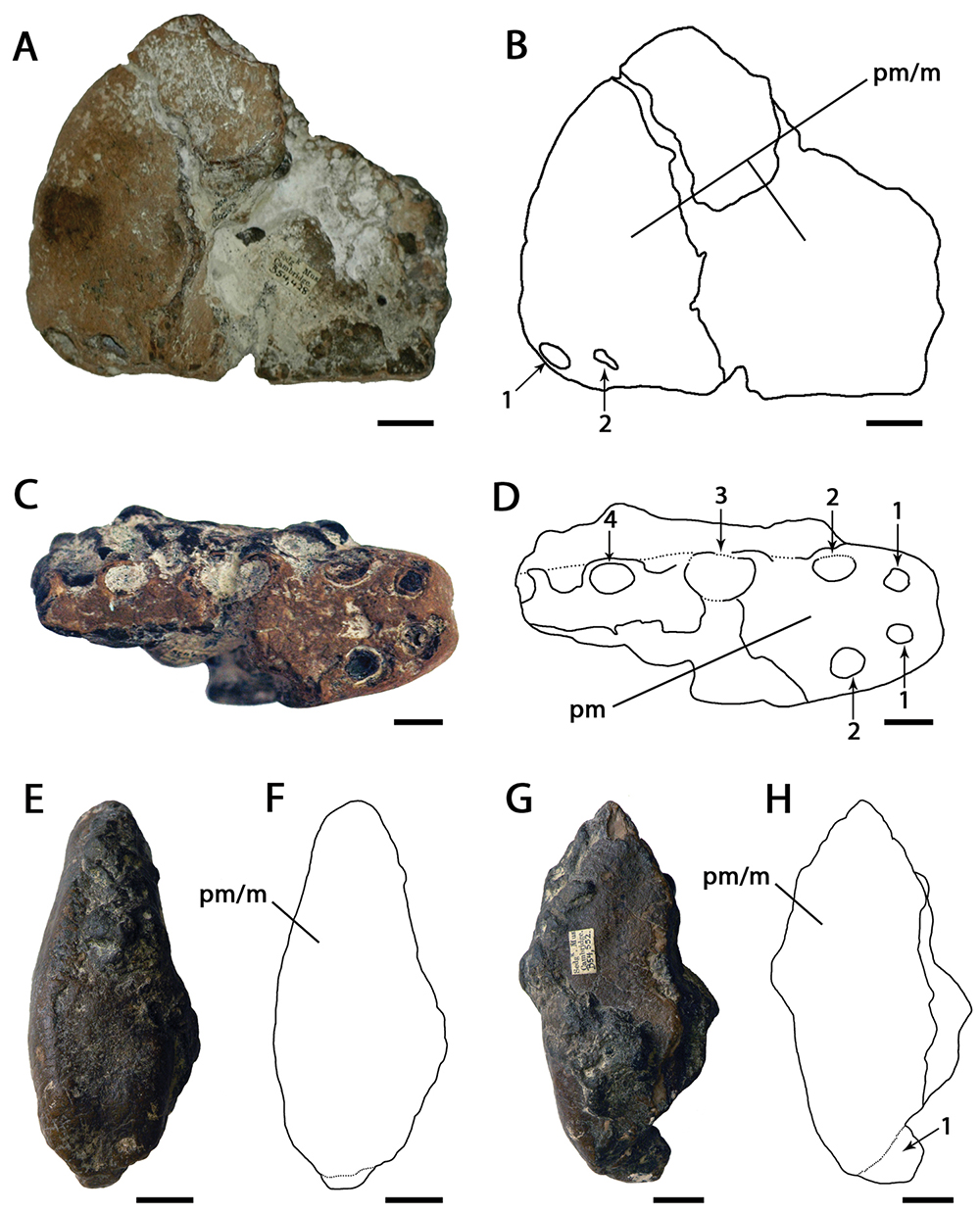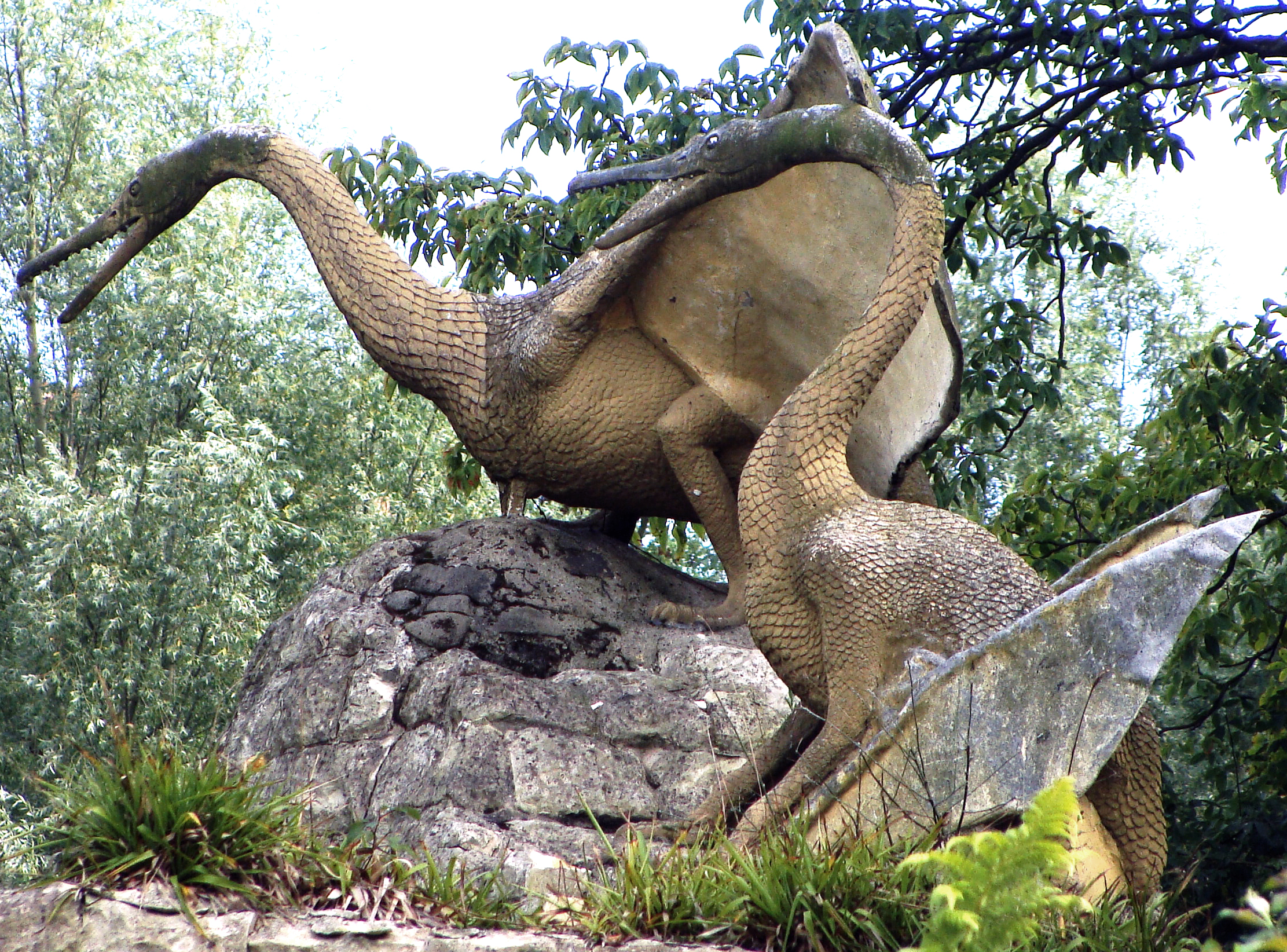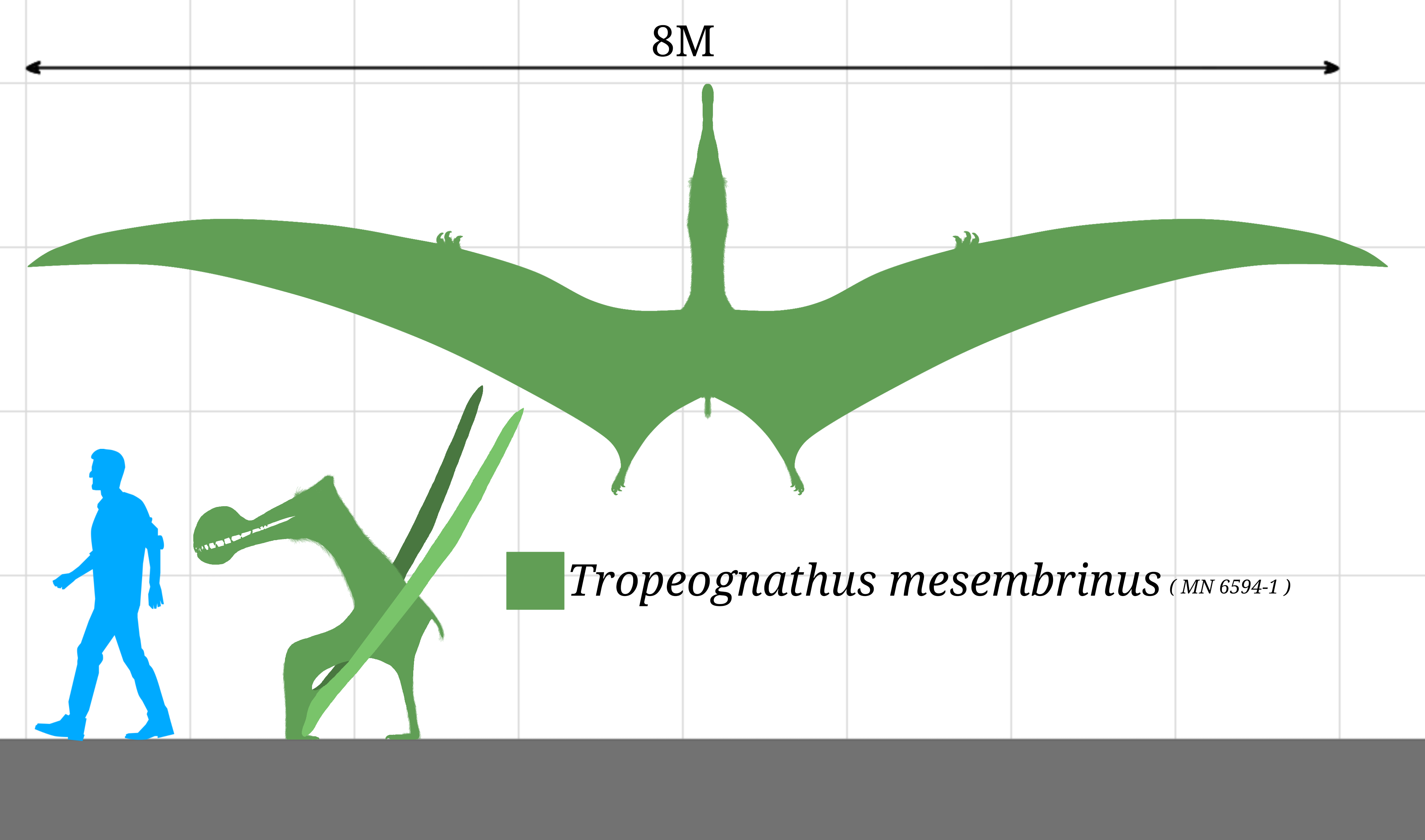|
Ornithocheiridae
Ornithocheiridae (or ornithocheirids, meaning "bird hands") is a group of pterosaurs within the suborder Pterodactyloidea. These pterosaurs were among the last to possess teeth. Members that belong to this group lived from the Early to Late Cretaceous periods (Valanginian to Turonian stages), around 140 to 90 million years ago. Ornithocheirids are generally infamous for having an enormously controversial and very confusing taxonomy. Although agreements that these animals were related, and therefore similar to istiodactylids and pteranodontians, there is still no virtual consensus over the exact content and interrelationships of this group. Ornithocheirids were the most successful pterosaurs during their reign, they were also the largest pterosaurs before the appearance of the azhdarchids such as ''Quetzalcoatlus''. Ornithocheirids were excellent fish hunters, they used various flight techniques to catch their prey, and they are also capable of flying great distances without fl ... [...More Info...] [...Related Items...] OR: [Wikipedia] [Google] [Baidu] |
Cimoliopterus
''Cimoliopterus'' is a genus of pterosaur that lived during the Late Cretaceous in what is now England and the United States. The first known specimen, consisting of the front part of a snout including part of a crest, was discovered in the Grey Chalk Subgroup of Kent, England, and described as the new species ''Pterodactylus cuvieri'' in 1851. The specific name ''cuvieri'' honours the palaeontologist George Cuvier, whereas the genus ''Pterodactylus'' was then used for many pterosaur species that are not thought to be closely related today. It was one of the first pterosaurs to be depicted as models in Crystal Palace Park in the 1850s. The species was subsequently assigned to various other genera, including ''Ornithocheirus'' and ''Anhanguera''. In 2013, the species was moved to a new genus, as ''Cimoliopterus cuvieri''; the generic name ''Cimoliopterus'' is derived from the Greek words for "chalk" and "wing". Other specimens and species have also been assigned to or synonymi ... [...More Info...] [...Related Items...] OR: [Wikipedia] [Google] [Baidu] |
Siroccopteryx
''Siroccopteryx'' is an extinct genus of anhanguerid pterodactyloid pterosaur, known from middle Cretaceous (between the Albian and Cenomanian stages, about 105 million years ago) sediments in modern-day Morocco. Some researchers, such as David M. Unwin, consider the genus a junior synonym of ''Coloborhynchus''. Description The genus was named and described in 1999 by Bryn Mader and Alexander Kellner. The name ''Siroccopteryx'' means "wing of the Sirocco", referring to the warm wind that originates in the North Africa and then goes through the Mediterranean, and the Greek word ''pteryx'', a standard suffix for pterosaur genera that means "wing". The epithet of the type species ''S. moroccensis'' refers to its country of origin. This pterosaur is known only from the front part of the jaw with teeth. The holotype fossil, LINHM 016 (Long Island Natural History Museum), was found near Ksar es Souk, in the province of Errachidia in the region of Meknes-Tafilalet at 30.4 ° N, 4 ... [...More Info...] [...Related Items...] OR: [Wikipedia] [Google] [Baidu] |
Coloborhynchus
''Coloborhynchus'' is a genus of pterodactyloid pterosaur belonging to the family Anhangueridae, though it has also been recovered as a member of the Ornithocheiridae in some studies. ''Coloborhynchus'' is known from the Lower Cretaceous of England (Valanginian age, 140 to 136 million years ago), and depending on which species are included, possibly the Albian and Cenomanian ages (113 to 93.9 million years ago) as well. ''Coloborhynchus'' was once thought to be the largest known toothed pterosaur, however, a specimen of the closely related ''Tropeognathus'' is now thought to have had a larger wingspan. History and classification Like many ornithocheiroid pterosaurs named during the 19th century, ''Coloborhynchus'' has a highly convoluted history of classification. Over the years numerous species have been assigned to it, and often, species have been shuffled between ''Coloborhynchus'' and related genera by various researchers. In 1874 Richard Owen, rejecting the creation by H ... [...More Info...] [...Related Items...] OR: [Wikipedia] [Google] [Baidu] |
Tropeognathus Mesembrinus
''Tropeognathus'' (meaning "keel jaw") is a genus of large pterosaurs from the late Early Cretaceous of South America. This genus is considered to be a member of the family Anhangueridae, however, several studies have also recovered it within another family called Ornithocheiridae. Both of these families are diverse groups of pterosaurs known for their keel-tipped snouts and large size. ''Tropeognathus'' is regarded as the largest pterosaur found in the Southern Hemisphere, only rivaled by the huge azhdarchids. The type and only species is ''Tropeognathus mesembrinus''. Fossil remains of ''Tropeognathus'' have been recovered from the Romualdo Formation, which is a Lagerstätte located in the Santana Group of the Araripe Basin in northeastern Brazil. Discovery and naming In the 1980s the German paleontology museum '' Bayerische Staatssammlung für Paläontologie und historische Geologie'' in Munich acquired a pterosaur skull from Brazilian fossil dealers that had probably b ... [...More Info...] [...Related Items...] OR: [Wikipedia] [Google] [Baidu] |
Uktenadactylus
''Uktenadactylus'' is a genus of anhanguerid pterodactyloid pterosaurs from the Lower Cretaceous Paw Paw Formation of Texas, United States and the Wessex Formation on the Isle of Wight, England. Fossil remains of ''Uktenadactylus'' dated back to the Early Cretaceous period (Barremian to Cenomanian stages), from about 125 to 100 million years ago. Discovery and naming In 1994, Yuong Nam-Lee named a new species within the genus ''Coloborhynchus'': ''Coloborhynchus wadleighi'', based on a partial snout found in 1992 in Albian layers in Tarrant County, holotype SMU 73058 ( Shuler Museum of Paleontology, Southern Methodist University at Dallas). The specific name honors the collector of the fossil, Chris Wadleigh. The reference of the species to the genus ''Coloborhynchus'' was based on the fact that both ''C. wadleighi'' and the type species of ''Coloborhynchus'', ''Coloborhynchus clavirostris'', share the trait of having three pairs of teeth laterally placed within a broad snout ti ... [...More Info...] [...Related Items...] OR: [Wikipedia] [Google] [Baidu] |
Tropeognathus
''Tropeognathus'' (meaning "keel jaw") is a genus of large pterosaurs from the late Early Cretaceous of South America. This genus is considered to be a member of the family Anhangueridae, however, several studies have also recovered it within another family called Ornithocheiridae. Both of these families are diverse groups of pterosaurs known for their keel-tipped snouts and large size. ''Tropeognathus'' is regarded as the largest pterosaur found in the Southern Hemisphere, only rivaled by the huge azhdarchids. The type and only species is ''Tropeognathus mesembrinus''. Fossil remains of ''Tropeognathus'' have been recovered from the Romualdo Formation, which is a Lagerstätte located in the Santana Group of the Araripe Basin in northeastern Brazil. Discovery and naming In the 1980s the German paleontology museum '' Bayerische Staatssammlung für Paläontologie und historische Geologie'' in Munich acquired a pterosaur skull from Brazilian fossil dealers that had probably bee ... [...More Info...] [...Related Items...] OR: [Wikipedia] [Google] [Baidu] |
Camposipterus
''Camposipterus'' is a genus of pterodactyloid pterosaur from the Early Cretaceous of England. Fossil remains of ''Camposipterus'' dated back to the Early Cretaceous, about 112 million years ago. Discovery and naming In 1869, Harry Govier Seeley, based on a fossil found at Haslingfield, Cambridgeshire, named ''Ptenodactylus nasutus'',Seeley, H.G., 1869, ''Index to the fossil remains of Aves, Ornithosauria, and Reptilia, from the Secondary System of Strata arranged in the Woodwardian Museum of the University of Cambridge''. Deighton, Bell and Co., Cambridge, xxiii + 143 pp at the same time disclaiming the name which makes it invalid by modern standards. In 1870, Seeley had realized that the generic name ''Ptenodactylus'' had been preoccupied, so he renamed the species into ''Ornithocheirus nasutus''.Seeley, H.G., 1870, ''The Ornithosauria: an elementary study of the bones of pterodactyls, made from fossil remains found in the Cambridge Upper Greensand, and arranged in the Woodwar ... [...More Info...] [...Related Items...] OR: [Wikipedia] [Google] [Baidu] |
Ornithocheirus
''Ornithocheirus'' (from Ancient Greek "ὄρνις", meaning ''bird'', and "χεῖρ", meaning ''hand'') is a pterosaur genus known from fragmentary fossil remains uncovered from sediments in the UK and possibly Morocco. Several species have been referred to the genus, most of which are now considered as dubious species, or members of different genera, and the genus is now often considered to include only the type species, ''Ornithocheirus simus''. Species have been referred to ''Ornithocheirus'' from the mid-Cretaceous period of both Europe and South America, but ''O. simus'' is known only from the UK, though a specimen referred to ''O.'' cf. ''simus'' is also known from Morocco. Because ''O. simus'' was originally named based on poorly preserved fossil material, the genus ''Ornithocheirus'' has suffered enduring problems of zoological nomenclature. Fossil remains of ''Ornithocheirus'' have been recovered mainly from the Cambridge Greensand of England, dating to the beginni ... [...More Info...] [...Related Items...] OR: [Wikipedia] [Google] [Baidu] |
Pterodactylus Simus
''Ornithocheirus'' (from Ancient Greek "ὄρνις", meaning ''bird'', and "χεῖρ", meaning ''hand'') is a pterosaur genus known from fragmentary fossil remains uncovered from sediments in the UK and possibly Morocco. Several species have been referred to the genus, most of which are now considered as dubious species, or members of different genera, and the genus is now often considered to include only the type species, ''Ornithocheirus simus''. Species have been referred to ''Ornithocheirus'' from the mid-Cretaceous period of both Europe and South America, but ''O. simus'' is known only from the UK, though a specimen referred to ''O.'' cf. ''simus'' is also known from Morocco. Because ''O. simus'' was originally named based on poorly preserved fossil material, the genus ''Ornithocheirus'' has suffered enduring problems of zoological nomenclature. Fossil remains of ''Ornithocheirus'' have been recovered mainly from the Cambridge Greensand of England, dating to the beginni ... [...More Info...] [...Related Items...] OR: [Wikipedia] [Google] [Baidu] |
Ornithocheirus Simus
''Ornithocheirus'' (from Ancient Greek "ὄρνις", meaning ''bird'', and "χεῖρ", meaning ''hand'') is a pterosaur genus known from fragmentary fossil remains uncovered from sediments in the UK and possibly Morocco. Several species have been referred to the genus, most of which are now considered as dubious species, or members of different genera, and the genus is now often considered to include only the type species, ''Ornithocheirus simus''. Species have been referred to ''Ornithocheirus'' from the mid-Cretaceous period of both Europe and South America, but ''O. simus'' is known only from the UK, though a specimen referred to ''O.'' cf. ''simus'' is also known from Morocco. Because ''O. simus'' was originally named based on poorly preserved fossil material, the genus ''Ornithocheirus'' has suffered enduring problems of zoological nomenclature. Fossil remains of ''Ornithocheirus'' have been recovered mainly from the Cambridge Greensand of England, dating to the beginni ... [...More Info...] [...Related Items...] OR: [Wikipedia] [Google] [Baidu] |
Mythunga
''Mythunga'' is a genus of anhanguerid pterosaur from the late Early Cretaceous of Australia. Fossil remains of ''Mythunga'' dated back to the Albian stage of the Early Cretaceous, and the animal itself was found to be a close relative of another Australian anhanguerid called ''Ferrodraco''. Discovery and naming ''Mythunga'' is known from a partial skull, holotype QM F18896 found in April 1991 by Philip Gilmore in marine rocks of the late Albian-age Toolebuc Formation at Dunluce Station west of Hughenden, Queensland. Only the middle snout and corresponding parts of the lower jaws are known, including the rear of a left premaxilla, the lower parts of both maxillae, the rear dentaries and a right splenial. They were three-dimensionally preserved, associated in a chalk nodule. It represents a subadult individual. The fossil was prepared by Angela Hatch of the Queensland Museum, both by mechanical means and by an acid bath. The type species ''Mythunga camara'' was named and descri ... [...More Info...] [...Related Items...] OR: [Wikipedia] [Google] [Baidu] |
Arthurdactylus
''Arthurdactylus'' is a genus of pterodactyloid pterosaur from the Early Cretaceous Crato Formation of northeastern Brazil. It was a medium-sized pterosaur, with a wingspan of and body mass of . It was in 1994 named by Eberhard Frey and David Martill in honor of Arthur Conan Doyle, who featured large reptilian pterosaurs in his novel ''The Lost World'', about a professor finding prehistoric animals still alive on a plateau in South-America. They first spelled the species name as ''Arthurdactylus conan-doylei'', thus with a forbidden diacritic sign, and themselves carried out the necessary emendation to ''conandoylei'' in 1998. The holotype is SMNK 1132 PAL, a reasonably complete skeleton, lacking only a skull, neck, sternum and some caudal vertebrae. The specimen, adult or nearly so, was preserved on a plate and is slightly crushed. ''Arthurdactylus'' had, compared to the torso length of 22 centimetres, relatively long wings and especially long wing fingers, perhaps much more so ... [...More Info...] [...Related Items...] OR: [Wikipedia] [Google] [Baidu] |










